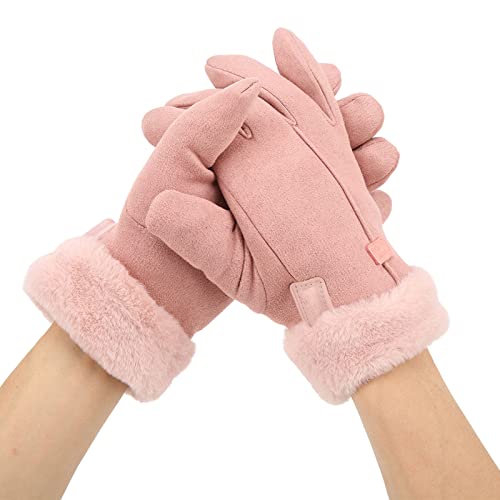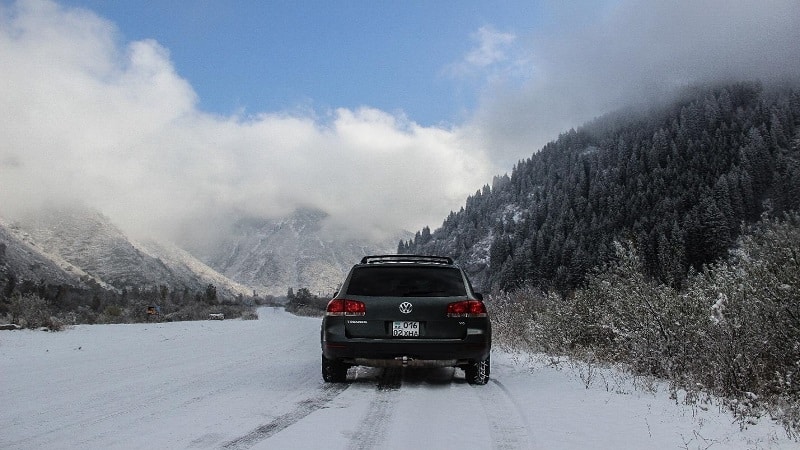Being a proficient skier requires more than a love for speed and the ability to balance oneself. A good skiing experience is contingent upon the vagaries of the weather and you must familiarize yourself with different snow conditions to know when the right time to head out to the slopes is. After all, excessive amounts of snow or strong winds can make it harder, not to mention, very, very dangerous.

When it comes to skiing, one must remember that visiting the same mountain twice does not guarantee the same temperature, visibility or snow. Over time, most seasoned skiers develop an understanding of this and plan their skiing trips accordingly. But for beginners, things can get somewhat tricky. What is the best time to head up to the mountains? And how does one determine the best temperature for skiing once you are there? Is fresh snow better for sliding downhill or no?
The National Ski Areas Association estimates that nearly 10.5 million Americans indulge in snow sports every winter. Yet, few know the answers to any of the questions above. If you are one of them, don’t worry. This guide to the best temperatures for skiing will have you ready for the slopes in no time!
The Best Temperatures for Skiing
Typically, this is considered to fall within 20 to 30 degrees Fahrenheit – roughly around -7 to -1 degrees Celsius. Experts have concluded that while the temperature is within this range, it is usually just warm enough to ensure skiers do not freeze whilst taking the lift to the top. At the same time, it is just cold enough to make the snow stick and prevent melting or slushing.
Ironically, many avid skiers prefer to take to the tracks during spring, instead of winter. This is because the temperature is higher during this time but the snow base is just deep enough, thereby creating the ideal ski conditions. If you to wish to be able to measure the surrounding temperatures anytime, anywhere, why not treat yourself to a hand-held thermometer? The AcuRite Iris (5-in-1) Home Weather Station is an ideal choice for those who want to keep an eye on the humidity, precipitation and wind speed/direction at all times.
That said, remember that the prevailing temperature is but a result of the overall weather. In other words, there is more to look out for than numbers on weather instruments.
What about the Weather?
It is advisable to take the weather forecast into account before you head out for the day. Just a two-minute Google search can spare you a great deal of time, effort, money and your life, even.
● Sunny Weather
When the Sun comes out, so should your skis. Sunny weather is widely considered the best for skiing as it affords great visibility. When the sky is clear and the atmosphere is crisp, white and clear, you will be able to view any possible gradient changes or bumps on the slope even better. The picture-perfect scenery around you will only makes the experience better. Sunny days are also typically less humid, making it easier for your body to retain heat.
However, it is pertinent to mention here that just because the Sun is out, do not assume it will be warmer outside. Sunny days tend to be amongst the coldest in winter.
● Blizzards
Heavy snowfall and strong winds are extremely dangerous conditions for one to be outdoors in, let alone for skiing. Herein, visibility is impaired and the level of moisture in the air is also high. This makes it harder for the human body to retain heat.
If a blizzard strikes while you are on a ski trip, we recommend taking the opportunity to rest it out for the day. Most ski resorts in America offer adequate indoor dining and entertainment facilities to keep guests busy, should they need a break. Blizzards may not bring the best temperature for skiing but perhaps, you could cozy up by the fire place with a book and a cup of hot cocoa instead?
● Flat Light
For the uninitiated, this occurs when sunlight diffuses through a thick layer of clouds. As a result, there are no shadows on the snow, making it easier to ski.
There are both advantages and disadvantages to this type of weather. For one, it offers reasonable visibility, thanks to the diffused light. Unfortunately, at the same time, the lack of shadows makes gradient changes on the slope more inconspicuous. It is best to try and remain below the tree line if you want to ski in flat light conditions.
● White Out
This entails either a blizzard or an usually misty day. Either way, white out conditions do not let one see very far ahead of themselves. In fact, visibility can get so poor that you run the risk of veering off the piste.
To prevent any accidents or injuries, it is best to avoid skiing during this time. Again, we recommend taking the day off to catch up on your sleep or spend time with others visiting the resort.
Snow for the Slopes
It is imperative to take snow conditions into account when calculating the best temperature for skiing as well. After all, how cold or how warm it is outside directly impacts the snow on the ground, which will, ultimately, impact your skiing experience.
Often, new skiers get overwhelmed while studying the different types of snow and whether they are suitable for skiing or not. But with time, and our guide to the best temperature for skiing, you will soon realize how variable snow conditions may be.
Fresh Snow
By and large, this is the most favourable condition to be skiing in. The science behind this is simple: a thick layer of fresh snow affords a better grip during any twists and turns on the course, thereby ensuring a smoother slide. Not to mention, it is the extra cushioning you need in the likely event of a fall.
Having said that, fresh snow can accumulate here and there and create bumps on the slope. Be mindful of these, lest you trip.
Powder Snow
This occurs after an episode of heavy snowfall. Powder snow is also popular amongst skiers in that its moisture content and structure makes one feel like they are floating over the ground. Due to maintenance and grooming, there is unlikely to be much powder snow on the piste but if you head over to the sides of the slope, you could potentially spot a mound or two.
A word of advice, though: If you come across some powder snow whilst going downhill, make sure to put all your weight on the back of your skis so their front tips do not pick up the powder as you go. Although this type of snow also provides extra cushioning, it is rather difficult to get back up.
Packed Powder
After powder snow has been smoothed down by the piste basher, it becomes what skiers refer to as packed powder. Luckily, this makes for a great base for skiing, especially for beginners. It is also ideal for intermediate or professional skiers looking to try out new techniques without running into any accidents. The only drawback is that packed powder snow doesn’t offer that sense of gliding over ground.
Slush Snow
Come spring, when the temperatures begin to rise and the snow starts melting and mixing with the earth, it becomes slush. Skiing in slush conditions is usually slower, which you may enjoy. But the wet and heavy snow make it harder to maneuver during the ride, taking up more effort than usual.
Crud Snow
Arguably the worst conditions for skiing, crud snow occurs when ungroomed powder snow has been run through by other skiers, creating lumps across the sides of the piste. Learning how to meander through these inconsistencies requires ample concentration, skill and experience.
Sticky Snow
Much like slush snow, this is also but a result of rising temperatures and melting. But it is different in that it creates a vacuum under your skis, making it harder to move through the snow. Most ski resorts are very particular about sticky snow, seeing as how it hampers the skiing experience. If you do happen to come across some though, best to avoid skier there.
Hard-Packed / Ice Pistes
Hard-packed powder snow is typically very slippery. Ice, as one would expect, is the same. The former, however, is less dangerous.
Interestingly, you may come across hard-packed snow or ice on the slope together. If you do, we recommend treading carefully. Both occur due to an increase in the water content of the snow. Regular skiing and grooming of the slopes tends to compact the snow. When these heavily-compacted areas begin to melt during daytime, and then re-freeze at night, they develop very slick surfaces.
If an adrenaline rush is what you seek, hard-packed snow or icey pistes are for you. The slippery surfaces make for a precarious, fast ride downhill. Naturally, it is harder to maintain control while skiing in such conditions. Digging your skies into the snow becomes all the more tricky on icey slopes, as does taking turns.
What’s Better for Skiing: Summer or Winter?
Now that the factors that determine the best temperatures for skiing have been covered, it is high time we came to a conclusion. Unfortunately, there is no right or wrong here. One would expect winter to be the ideal climate for skiing, seeing as how it is a winter sport and all that. On the contrary, many prefer to hit the slopes in the summer as being outdoors in the colder months puts them off.
Still, in most cases, lower temperatures are preferred. People who dislike winter may eventually grow accustomed to the cold weather. There is also ample research of the health benefits of cold exposure on the human mind and body. And still, if the biting cold is still making you uneasy, why not try the Under Armour Handwarmer for instant temperature control?
Skiing in summer is recommended for those who don’t mind sticky or slushy snow conditions. One is unlikely to get fresh powder in the warmer months and you may have to keep a look out for rocks or grass on the course.
But there are some plus-points. For one, you will get more sun. Additionally, most ski resorts reduce their prices during the warmer months as they aren’t in peak season. Not only would that help financially, there will also be fewer people on the slopes!
Our Final thoughts
It is always better to learn what awaits you before you lock in a booking. Different climates offer different skiing conditions and one must know what to expect beforehand so they can prepare accordingly. What you think is the best temperature for skiing will depend on you.
We recommend pondering over what you wish to achieve through a ski trip. If adventure and adrenaline are your objective, hit the slopes in the winter for a proper sporting experience. But if you are merely looking for some respite from your hectic city life in the mountain air, a spring/summer siesta would be great for you. Either way, you’re going to be need high-quality ski gear and something to store it in for a wholesome experience on the slopes. If you’re travelling with kids, might we suggest the Sklon Training Harness? It is ideal for teaching the little ones the art of skiing!
















